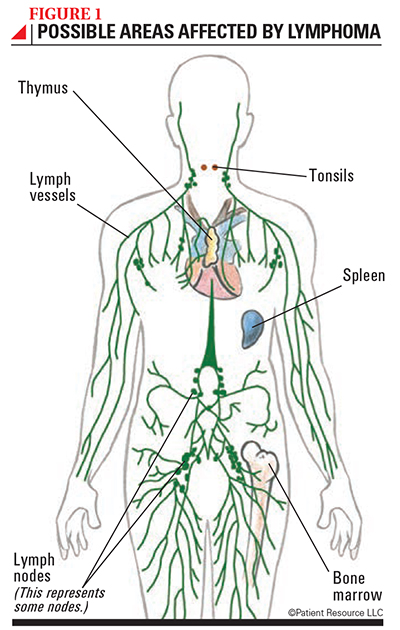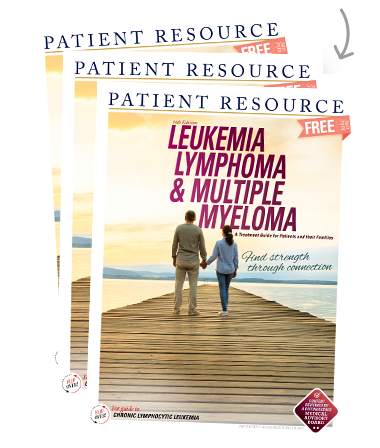Lymphoma
Overview
Lymphoma is the most common blood cancer in the United States. It develops in the lymphatic system, which is a critical part of the immune system that helps to protect your body from infection and disease. It consists of lymph, lymphoid tissue, lymph nodes and lymph vessels (see Figure 1). The following information will help you learn more about your condition so you can make informed and confident decisions.
These are the components of the lymphatic system:
- Lymph is fluid that carries cells and travels through lymph vessels.
- Lymphoid tissue is mostly made up of white blood cells (lymphocytes).
- Lymph nodes filter substances that travel through the lymphatic fluid.
- Lymph vessels connect hundreds of lymph nodes.

Lymphoma develops when normal lymphocytes (a type of white blood cell) transform into abnormal cancer cells. These cancer cells reproduce uncontrollably and collect in bone marrow, lymph nodes and other parts of the lymphatic system. They begin to outnumber normal cells, which can cause the lymph nodes, spleen or other organs to enlarge.
Two main types of lymphocytes can transform into lymphoma. They are B-lymphocytes (B-cells) and T-lymphocytes (T-cells). The B-cells and T-cells work in different ways to defend your body against infection.
Lymphomas are divided into Hodgkin lymphoma and non-Hodgkin lymphoma (NHL). Both can arise in any lymphoid tissue, including lymphocytes in other organs.
Moving forward
Learn as much as possible about your type of blood cancer so that you are prepared to ask questions and make decisions about your care. You and your doctor will work together to develop a treatment plan that maximizes your quality of life.
You are encouraged to seek out accredited hospitals, cancer centers and doctors with expertise in treating the type of blood cancer you have. Looking for a second opinion may prove valuable because doctors may suggest different treatment plans and have unique expertise. Your doctor might be the best resource for finding a second opinion.
Some of the terms your medical team uses may be confusing. These definitions may help you feel more informed as you make the important decisions ahead:
- First-line therapy is the first treatment used.
- Second-line therapy is given when the first-line therapy does not work or is no longer effective.
- Standard of care refers to widely recommended treatments known for your type and stage of cancer. It can apply to first-line therapy or later lines of treatment.
- Neoadjuvant therapy is given to shrink a tumor before the primary treatment (usually surgery).
- Adjuvant therapy is additional cancer treatment given after the primary treatment (usually surgery or radiation therapy) to destroy remaining cancer cells and lower the risk that the cancer will come back.
- Systemic treatments travel throughout the body and are typically drug therapies, such as chemotherapy, molecular therapy, targeted therapy and immunotherapy.



